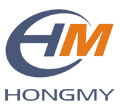The Versatility of Double-Sided PCBs: Supporting Both Through-Hole and Surface Mount Components
Can double-sided PCBs support through-hole and surface mount components? This article delves into the compatibility and adaptability of double-sided PCBs to accommodate both types of components. With their unique design and construction, double-sided PCBs offer a wide range of advantages that enable them to support through-hole and surface mount components efficiently.
1. Understanding Double-Sided PCBs
Double-sided PCBs consist of copper layers on both sides of an insulating material, typically FR-4. These copper layers serve as the conductive pathways for electronic signals and power distribution. With their ability to accommodate components on both sides, double-sided PCBs offer increased space utilization and compactness in electronic circuits.
2. Through-Hole Components and Double-Sided PCBs
Through-hole components have leads that pass through holes in the PCB and are soldered to the copper layers. Double-sided PCBs can efficiently support through-hole components by providing sufficient space for inserting and soldering the leads. This capability makes them ideal for applications requiring robust and reliable connections, such as power electronics.
3. Surface Mount Components and Double-Sided PCBs
Surface mount components, on the other hand, are soldered directly onto the copper pads on the PCB surface. Double-sided PCBs can incorporate surface mount components by dedicating one side for surface mounting. The other side can then be used for through-hole components or as an additional layer for traces, enabling increased functionality and circuit density.
4. Design Considerations for Compatibility
Designing PCBs with both through-hole and surface mount components requires careful planning. To ensure compatibility, considerations such as component placement, pad design, and routing should be taken into account. Adequate clearance, spacing, and suitable soldering techniques play crucial roles in successful integration and functionality.
5. The Advantages and Applications of Double-Sided PCBs
Double-sided PCBs offer numerous benefits, including increased design flexibility, space efficiency, reduced size and weight, and cost-effectiveness. They find applications in various industries such as consumer electronics, automotive systems, telecommunications, and industrial control systems.
Concluding Thoughts
In conclusion, double-sided PCBs are highly versatile and can seamlessly accommodate both through-hole and surface mount components. Their adaptability stems from the design and construction that allows for the integration of different component types on each side. By considering design considerations and best practices, engineers can harness the full potential of double-sided PCBs to create reliable and compact electronic circuits.

